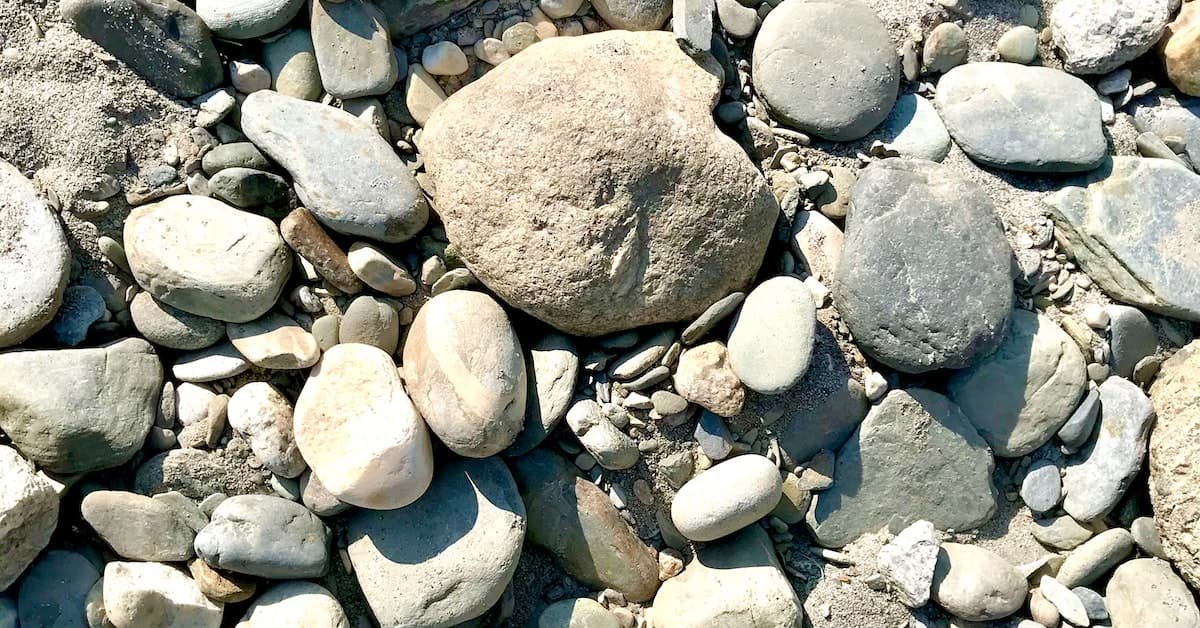
Maintaining a beautiful garden or landscape can be a challenging task, especially when unwanted rocks are scattered throughout the yard. While rocks can add a unique aesthetic appeal to your yard, they can also hinder plant growth and make it difficult to sustain a healthy garden.
The presence of rocks in the soil can also make it challenging to mow your lawn or perform other yard maintenance tasks. Therefore, it is essential to remove the rocks to create an environment that supports healthy plant growth and is easier to maintain.
This article offers tips and tools for removing unwanted rocks in your backyard, whether you want to repurpose them for retaining walls and garden walkways or dispose of them altogether. We will provide detailed instructions for removing both loose and embedded rocks, allowing you to transform your yard into the beautiful oasis you deserve.
With a little bit of effort and the right tools, you can successfully remove unwanted rocks from your yard and create a beautiful landscape that enhances the curb appeal of your home.
Short Summary
- Unwanted rocks can hinder plant growth and make yard maintenance difficult.
- Various tools and techniques are available for removing rocks from the yard, including rototillers, pointed shovels, and garden rakes.
- Proper soil preparation and the use of geotextile cloth can make rock excavation easier.
- Rocks can be repurposed for functional elements such as retaining walls and garden walkways or used as decor and drainage to enhance curb appeal.
Landscaping with Rocks
When landscaping with rocks, it should be noted that while rocks can serve as an attractive accessory, they have the potential to hinder the growth of plants. Thus, it is important to carefully consider the placement of rocks within a garden design.
One option is to create a rock garden design, which features an arrangement of rocks and low-maintenance plants that complement each other. This can provide a beautiful and functional addition to the landscape without negatively impacting plant growth.
Furthermore, rocks can be repurposed for functional elements such as retaining walls and garden walkways. These structures can provide practical benefits such as soil erosion prevention and improved accessibility.
Additionally, rocks can be used to create a natural-looking landscape design that blends in with the surrounding environment. Overall, incorporating rocks into landscaping can provide a range of benefits, as long as they are used thoughtfully and strategically.
Tools for Removal
Various implements are available for the extraction of stones from outdoor spaces. The most common types of rock removal tools include a rototiller for unearthing larger hidden rocks, a pointed shovel for prying out those embedded in the soil, and a garden rake for addressing loose materials on the surface.
These tools can be likened to different tools in a carpenter’s toolbox, each with a specific purpose and unique benefits.
To ensure that these tools remain effective and long-lasting, it is important to practice good maintenance habits. Best practices for tool maintenance include cleaning and oiling after each use, storing them in a dry and secure location, sharpening blades as needed, and replacing damaged or worn parts promptly.
By following these simple steps, homeowners can maximize the lifespan and performance of their rock removal tools, making yard work easier and more efficient.
Removing Loose Rocks
Loose materials on the surface can be easily removed from outdoor spaces with the help of a garden rake and pointed shovel. Rocks that are not embedded in the soil can be raked up and placed in a wheelbarrow for removal. Loose rocks or gravel can also be shoveled up and removed in the same manner.
For those who want to keep the rocks, they can be repurposed as decor. Using rocks as decorative elements in landscaping is a popular trend. They can be arranged in patterns or used to line garden beds and walkways. Loose rocks can also be used for drainage in areas where water collects. Overall, removing loose rocks can be a quick and easy process, and the rocks can be repurposed in various ways to enhance the outdoor space.
| Pros | Cons |
|---|---|
| Easy to remove | May have to remove a lot of rocks |
| Can be repurposed as decor | Can be heavy to lift and move |
| Can be used for drainage | May need to dispose of excess rocks |
Removing Embedded Rocks
Removing embedded rocks requires careful assessment of the situation and strategic use of tools such as a rototiller or pointed shovel to break up the soil and loosen larger rocks.
Before beginning the excavation process, it is important to determine the size and depth of the rocks to be removed. This will help in selecting the appropriate tool and technique for the job.
Once the rocks have been identified, a rototiller can be used to break up the soil around them. This will make it easier to remove the rocks from the ground. For larger rocks, it may be necessary to dig around them and loosen the soil to pry them loose.
Working in sections and using a pointed shovel to break up the soil can help avoid injury and make the job easier.
Rock excavation can be a time-consuming task, but proper soil preparation can make the process much easier.
Adding water to the soil can help loosen it and make it easier to work with. Additionally, geotextile cloth can be placed on top of the soil to help separate the rocks from the soil. This will make it easier to remove decorative gravel or small rocks without disturbing the soil.
It is important to take breaks and use proper safety equipment, such as gloves and a wheelbarrow, to avoid injury.
By carefully assessing the situation and using the appropriate tools and techniques, removing embedded rocks can be a manageable task.
FAQs
What are some creative ways to repurpose unwanted rocks in your yard besides using them for retaining walls or garden walkways?
Creative landscaping ideas for repurposing unwanted rocks in your yard include DIY rock crafts such as creating a rock garden, building a natural stone fire pit, making rock sculptures, or using rocks as edging for flower beds. These ideas can add unique and personalized touches to your outdoor space.
Can you use any household items as tools for rock removal, or do you need to purchase specialized equipment?
“Efficient removal techniques for rocks in your yard can be achieved through DIY methods using household tools. Time management is important when removing embedded rocks, but with a pointed shovel and garden rake, loose rocks can easily be removed.” ‘For larger rocks, a pry bar or rock bar can be used to break them loose and a wheelbarrow can be used to haul them away.’
How can you dispose of a large amount of rocks that you remove from your yard?
Landscaping challenges often involve DIY rock disposal, which can be achieved through various methods. Options include using the rocks for retaining walls or walkways, donating them to a local garden or landscaping company, or contacting a landscaping waste removal service for disposal.
Are there any safety precautions you should take before attempting to remove rocks from your yard?
Precautionary measures should be taken before attempting to remove rocks from your yard. Common injuries include strained muscles, back pain, and cuts. It is important to wear protective gear and use proper tools to avoid injury.
How long does it typically take to remove rocks from a yard, and is it a one-time process or an ongoing maintenance task?
The timeframe for removing rocks from a yard depends on the size and amount of rocks, as well as the tools used. While it can be a one-time process, ongoing maintenance may be required to prevent new rocks from appearing.



